Think of South African cuisine, and quality steaks and red wine might come to mind. But the unique fusion food of Cape Malays is a gem just as deserving of recognition. Lying on South Africa’s southwestern coast, the Western Cape is one of the most beautiful areas of Africa and the home of Cape Malay cuisine.
Often overlooked, Cape Malay cuisine showcases how diverse culinary traditions from countries as far-flung as Indonesia, Malaysia and Holland blend harmoniously with African flavours. Think warm spices like cinnamon combined with fruity Malay curries, Dutch pastries and meats such as mutton and lamb.
The best place to start is in Cape Town’s Bo-Kaap, a traditionally Muslim neighbourhood filled with bustling kitchens within walking distance of the V&A Waterfront at the foot of Signal Hill. Born from working class roots, Bo-Kaap seems refreshingly immune to gentrification in an increasingly cosmopolitan city.
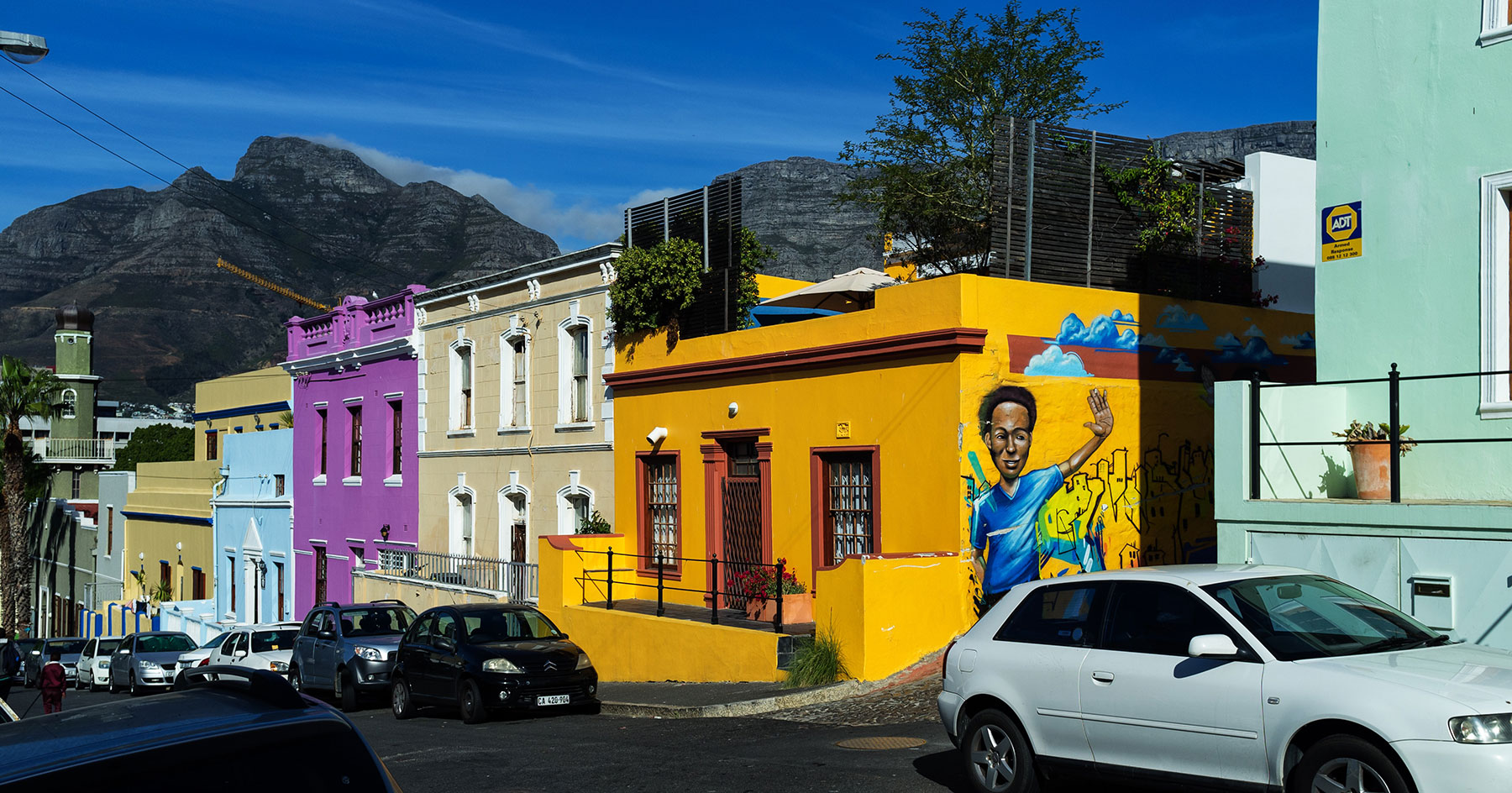
The colourful patchwork of houses – once a symbol of freedom from slavery – are cheerfully painted in bubblegum pink, lime green, cornflower blue, violet and bright orange. Paired with steep cobblestone streets, views of Table Mountain, and shouts of Afrikaans, it’s become something of a postcard destination.
Cape Malay cuisine’s dark origins
But discussing Cape Malay cuisine means first contending with its dark past: this fusion cuisine emerged from South Africa’s history of slavery. Dutch settlers of the 17th and 18th centuries had brought slaves to work in the Cape Colony. Predominantly Muslim, these slaves hailed from Malaysia, Indonesia, India, Madagascar and Sri Lanka. Many of the women served as slaves in Dutch households, where they often cooked for both European settlers and their own families. The Bo-Kaap area, in particular, emerged as a vibrant Muslim community as early as the late 1700s.
Preparing their traditional cuisine on foreign soil, the people adapted their recipes for the European settlers’ milder palates, or substituted spices for what was available in the region. Over the years, these culinary evolutions gave rise to Cape Malay cuisine as we know it today.
As Cape Town grows more modern, Bo-Kaap is still so traditional. It has a real sense of community – and the food!
The beating heart of Bo-Kaap
Cape Malay cuisine remains an important part of the Western Cape’s culture today, especially among the Muslim population of Cape Town and more particularly, the vibrant suburb of Bo-Kaap. The fragrance of spices like cloves, cardamom and coriander – bought from the decades-old Atlas Trading store – wafts from windows propped open against the summer heat. The streets are a perpetual hive of activity with greetings in Afrikaans and English punctuating the air alongside the clattering of pots, pans and street hawkers vying for attention as they sell their wares.
Reuben Riffel, renowned chef of Reuben’s, perfectly sums up his hometown: “Bo-Kaap holds a special place in my heart because it’s a sanctuary of authenticity. As Cape Town grows more modern, it’s still so traditional. It has a real sense of community – and the food! Traditional food like my mom’s bobotie makes it so special.”
Essential Cape Malay dishes and their flavours
Cape Malay food relies heavily on a delicate balance of sweet, savoury and tangy notes. Fiery heat from chilies is complemented by the sweetness of dried fruits like apricots and sultanas. Cinnamon, cloves and turmeric add a delightful depth to the dishes, while the tamarind’s tanginess contrasts with the coconut milk’s creaminess. Here are four quintessential Cape Malay Dishes not to be missed:
Bobotie
Fruity cottage pie
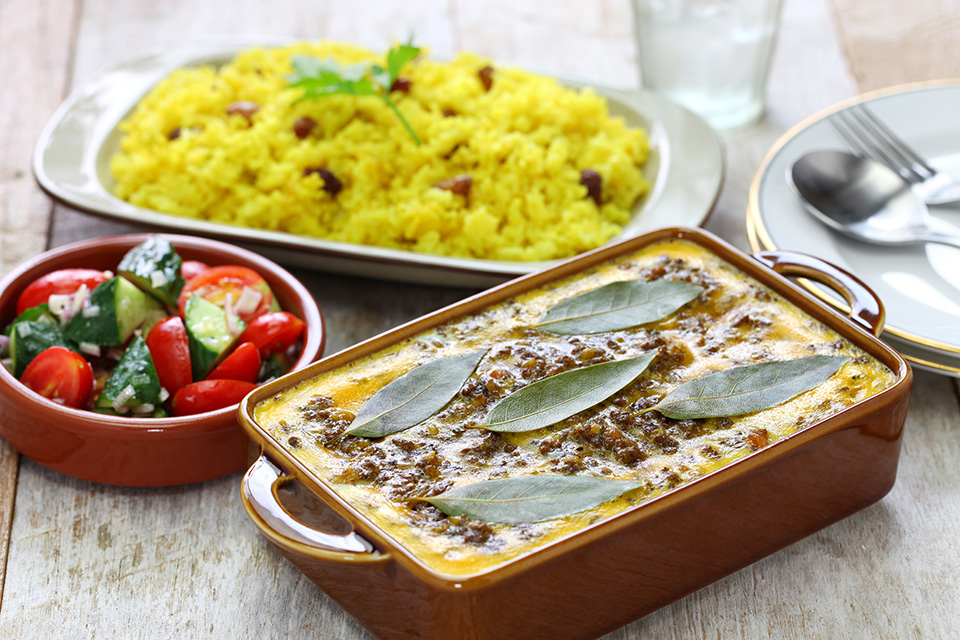
Perhaps the most quintessential Cape Malay dish is bobotie. This fruity take on a European cottage pie is made lovingly and adored by locals. Minced meat, typically beef or lamb, is infused with aromatic spices, raisins and almonds and finished with a baked savoury custard instead of potatoes. Served with sambal and rice, it’s arguably a contender for South Africa’s national dish. It’s also one of Riffel’s must-try recommendations for visitors – as long as it’s made the way his mother used to! While some recipes call for apples, bananas, or almonds, Riffel believes that the traditional way is best and sticks to golden sultanas and chutney for the fruity flavour.
Dennyingvleis
Braised tamarind meat stew
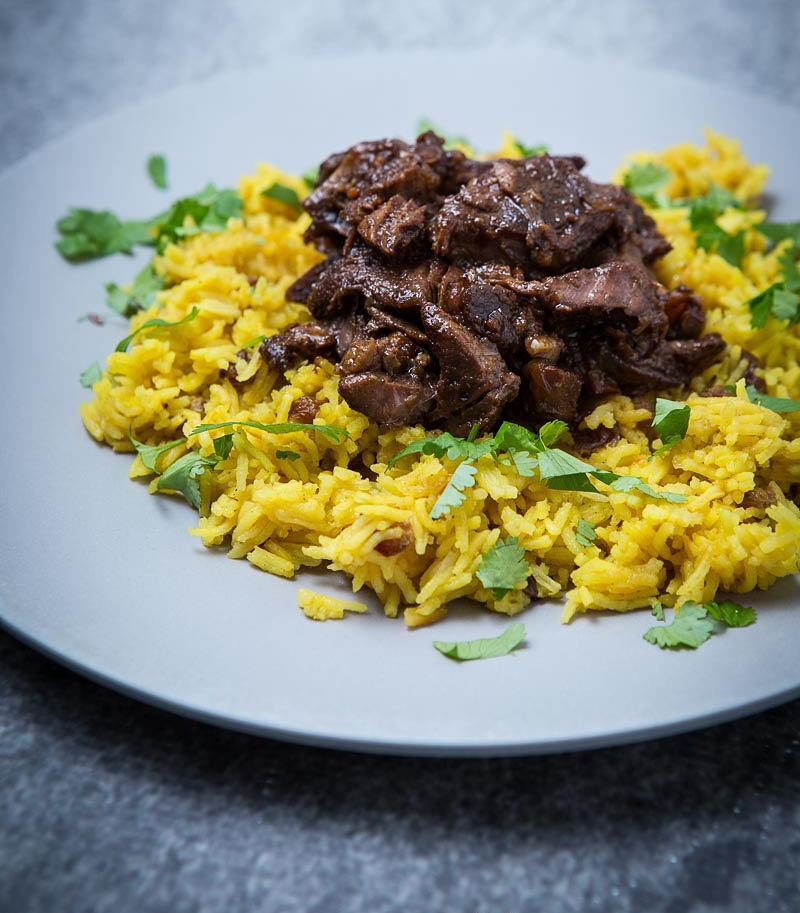
Denningvleis is a traditional, slowly-braised meat stew made with tamarind, sugar, cloves and allspice to give a unique sweet and sour taste combined with aromatic notes from bay leaves and nutmeg. While vleis is the direct translation of meat in Afrikaans, denning actually originated from the Javanese word dendeng, meaning the meat of the water buffalo. It is thought that the Dutch settlers enjoyed dendeng stew in Java and brought the recipe to the Cape, together with tamarind.
These days, it’s made with mutton or lamb and is often found on the table at Christmas dinners or birthday celebrations. It’s also a frequent favourite at Cape Malay weddings, where food is a major part of the festivities. While many stew recipes use plenty of liquid, the secret to a good denningvleis is in using water sparingly and letting the meat braise for hours over a low heat. For an authentic experience, make sure it’s served over spiced yellow rice, or as the locals call it, geelrys.
Boeber
Sweet milk congee
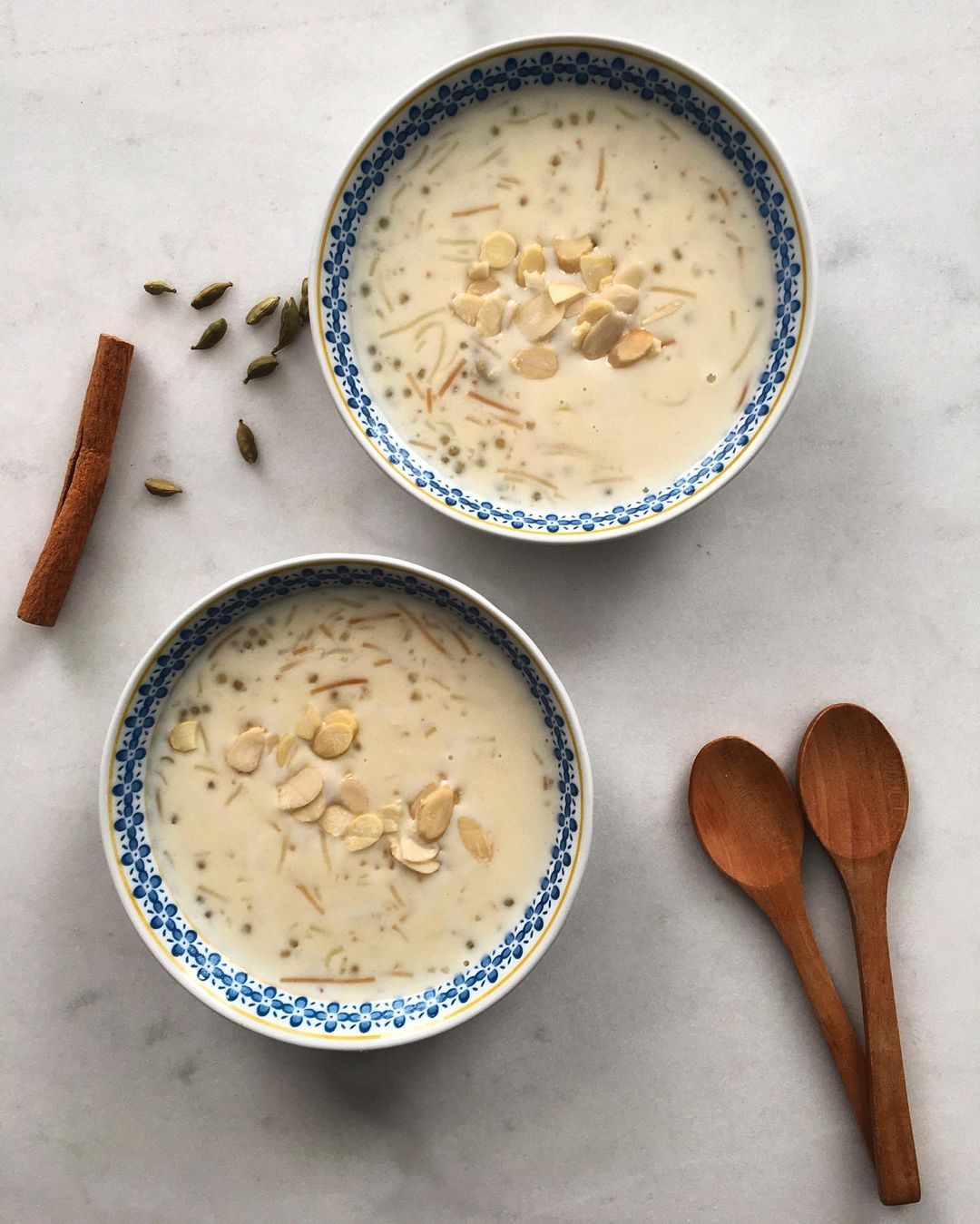
Boeber might sound a little like bobotie, but they’re completely different dishes. Riffel shares that eating boeber is one of his fondest culinary memories. It’s a sweet milk dish made with vermicelli noodles, cardamom, cinnamon, rose water and sago. It’s not baked and doesn’t have eggs – so it can sometimes be more like a thick drink texture than a pudding.
Those hailing from or who have visited parts of the Middle East or Asia might find its flavours somewhat familiar. It’s similar to the kheer of South India, Malaysian bubur lambuk or even sweet congee – a nod to the diverse influences which make up Cape Malay cuisine. Traditionally, it’s made and shared with one another on the 15th night of Ramadan, or the halfway mark of the fasting month. This custom is so popular that the midway point of Ramadan is known as boeberaand or boeber evening.
Koesister
Spiced donut
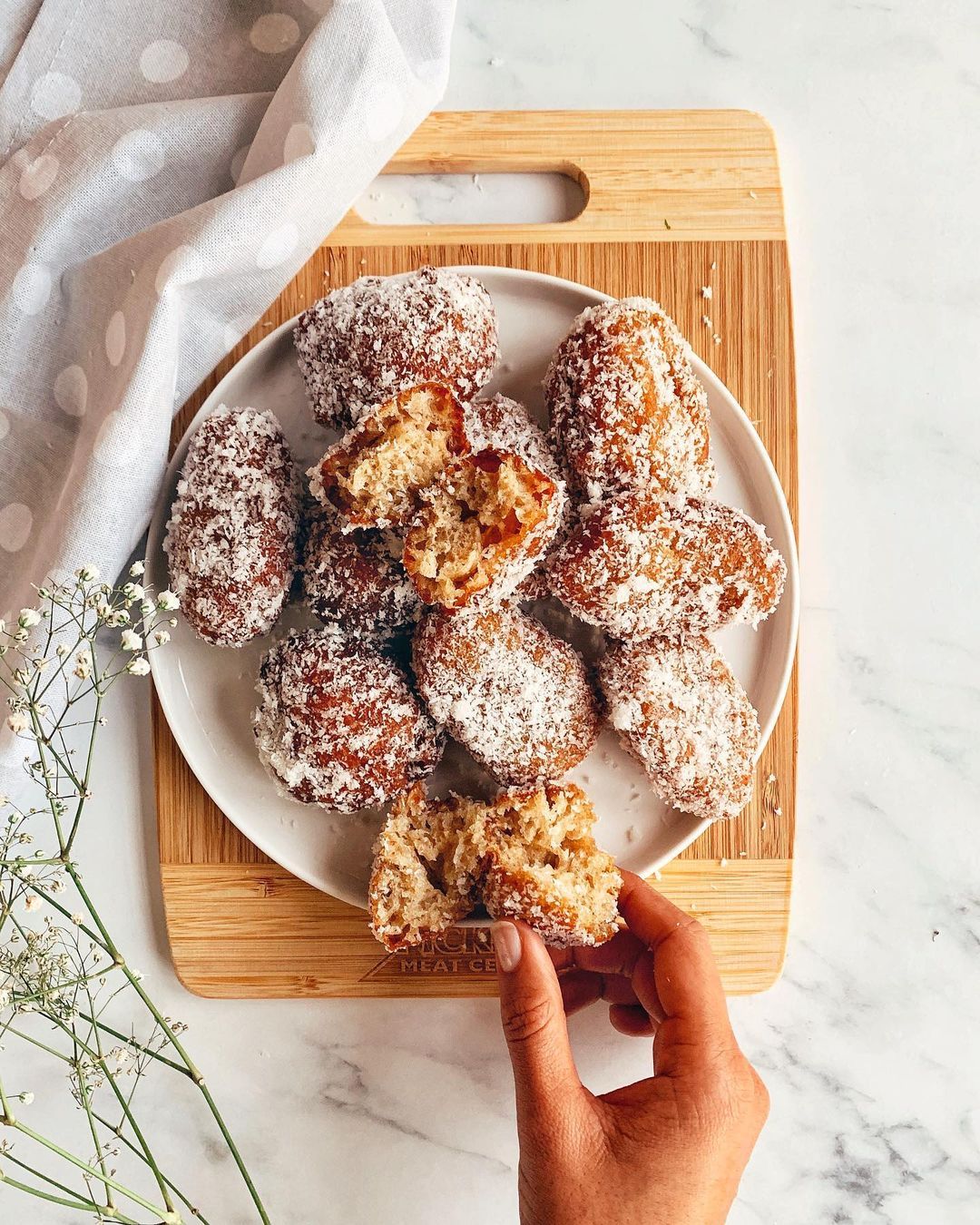
Then there’s koesisters, which are not to be confused with the syrupy plaited dough known as koeksisters. Although both are sweet dough-based desserts, koesisters are more like gently spiced doughnuts tossed in toasted coconut. The dough has notes of cardamom, cinnamon and aniseed, as well as naartjie peel. They’re soft and sweet, best eaten piping hot from a takeaway food stand outside a bright pink, purple, green or yellow house in the Bo-Kaap neighbourhood.
Koesisters have become a beloved part of Sunday breakfast in Bo-Kaap, often made by one of the aunties selling them locally and fetched by the children of the family. They’re still scoffed down on the move before a busy Sunday, so a weekend trip is your best shot at getting fresh, authentic koesisters.
The best Cape Malay eateries in Cape Town
Many of the best places to try Cape Malay cuisine can be found in the Bo-Kaap. Formerly known as the Malay Quarter, it’s a well-located neighbourhood within walking distance of the foot of famed landmark, Table Mountain. It’s also home to the oldest mosque in South Africa, and the Bo-Kaap Museum, where you can get a glimpse of the history and lives of the Cape Malay community.
Whether it’s the colourful streets of Bo-Kaap to the top-notch eateries in the city, no visit to Cape Town is complete without dipping your toes into the world of Cape Malay cuisine. Here are some prime spots to find authentic, delicious Cape Malay food:
Bo-Kaap Kombuis: This culinary gem began as a humble café and bakery, and has since blossomed into a full-fledged restaurant. It’s earned a well-deserved reputation for dishing up simple, delicious and authentic portions.
Mariam’s Kitchen: Make like a local and grab your grub from a takeaway spot like Mariam’s Kitchen, a chain of takeaways renowned for curries, samosas and the famous Cape sandwich: the gatsby. They’re the epitome of cheap and cheerful, without compromising on authenticity. Just make sure you go there hungry!
Biesmiellah: Nestled in the heart of Bo-Kaap, Biesmiellah is a halal establishment celebrated for its koesisters and bredies (stews), providing a true taste of Cape Malay cuisine. It’s simple and laid-back, almost as if a local had invited you home for dinner. The Osman family, owners of this stalwart of the Cape Malay dining scene, say it’s “built around Muslim beliefs and habits, which are central to our cuisine”.
Learn to cook Cape Malay food
If eating out isn’t enough for you, learning to cook Cape Malay cuisine might be right up your street. Unsurprisingly, the best place to do this is also in Bo-Kaap – and you don’t need to beg a local tannie (auntie) to teach you her skills. For an intimate culinary encounter, try Faeeza’s Home Kitchen. Here, you’ll join the likes of Roger Federer and Prime Minister Lee Hsien Loong, both of whom Faeeza recently hosted. Spend an afternoon immersing yourself in Cape Malay cuisine as Faeeza shares her passion, knowledge and time-honoured recipes perfected over decades of cooking food for hungry students at the University of Cape Town.
To learn more about Singapore Airlines’ flight service to Cape Town, visit the official website.
The post Discovering Cape Malay cuisine in Cape Town’s Bo-Kaap neighbourhood appeared first on SilverKris.
from SilverKris
No comments:
Post a Comment